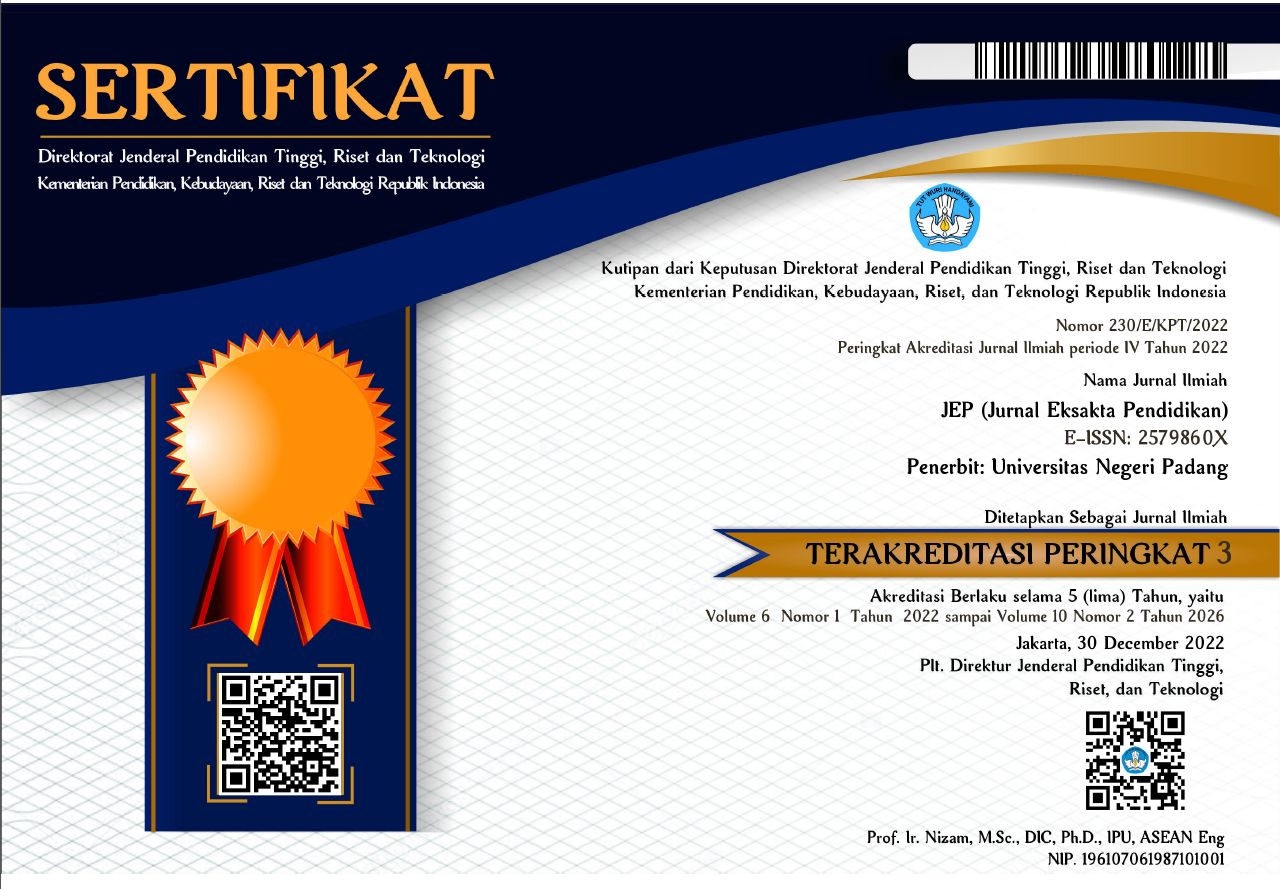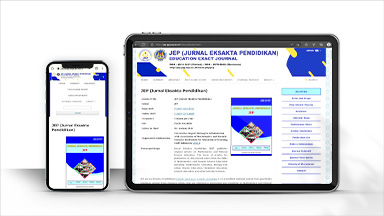Pengembangan Local Instructional Theory Pada Topik Pembagian dengan Pendekatan Matematika Realistik
Abstract
This research aimed to develop local instruction theory that is valid, practical, and effective to help elementary school students developing their mathematical problem-solving skills. Therefore a sequential activityis design on dailybasis to encourage students to develop their ability to solve mathematical problems, especially on the topic division. To achieve the goal, realistic mathematics approach was implemented to grade three elementary students in the learning process. The designed activities were validated by experts on the aspects of mathematical contents, language, didactical process based on realistic mathematical approach. Data were analyzed with descriptive statistics and parametric statistics. The validation results show that the local instruction theory was valid, and the implementation shows that the local instruction theory is practical and effective in improving students' mathematical problem-solving skills.
Downloads
References
Antari, L. (2015). Penggunaan Bahan Ajar Tema tik Pembagian Untuk Meningkatkan Hasil Belajar Di Kelas IIa MI Ahliyah II Palem bang. AKSIOMA Journal of Mathematics Education, 4(2), 22–29.
https://doi.org/10.24127/ajpm.v4i2.307
Armanto, D. (2002). Teaching multiplication and division realistically in Indonesian primary schools : a prototype of local ins tructional theory. 309. Retrieved from http://doc.utwente.nl/58710/1/thesis_Armanto.pdf
Chapman, O. (2011). International Symposium Elementary Maths Teaching : Prospective Elementary School Teachers’ Learning Tra jectory of Numerical System. In Education (pp. 138–147).
Fosnot, C. T., & Dolk, M. (2001). Young mathe maticians at work: Constructing multiplica tion and division.
Freudenthal, H. (1986). Didactical phenomenolo gy of mathematical structures (Vol. 1). Springer Science & Business Media.
Gee, E., Fauzan, A., & Atmazaki, A. (2018). Designing learning trajectory for teaching sequence and series using RME approach to improve students’ problem solving abilities. Journal of Physics: Conference Series, 1088. https://doi.org/10.1088/1742-6596/1088/1/012096
Gravemeijer, K. (2004). Local instruction theo ries as means of support for teachers in reform mathematics education. Mathemati cal Thinking and Learning, 6(2), 105–128.
Gravemeijer, K., & Van Eerde, D. (2009). Design research as a means for building a knowledge base for teachers and teaching in mathematics education. Elementary School Journal, 109(5), 510–524
https://doi.org/10.1086/596999
Harini, A.R., & Rosyidi, A. H. (2016). Lintasan Belajar Siswa pada Materi Jajargenjang dengan Metode Penemuan Terbimbing melalui Penelitian Desain. Jurnal Ilmiah Pendidikan Matematika, III (5), 28–37. Re trieved from https://jurnalmahasiswa.unesa .ac.id/index.php/mathedunesa/article/view/18508
Hasan, Q. A. (2012). Pengembangan Pembela jaran Operasi Pembagian. (November), 978–979.
Henik, A. (2016). Continius Issues in Numerical Cognition. In Continuous Issues in Nume rical Cognition: How Many or How Much. https://doi.org/10.1016/B978-0-12-801637-4.00004-4
Kim, J. W., & Pang, J. S. (2018). A comparative analysis of division in elementary mathe matics textbooks in Korea and Japan. Eura sia Journal of Mathematics, Science and Technology Education, 14(3), 811–822. https://doi.org/10.12973/ejmste/80946
Nuari, L. F., Prahmana, R. C. I., & Fatmawati, I. (2019). Learning of division operation for mental retardations’ student through math gasing. Journal on Mathematics Educa tion, 10(1), 127–142. https://doi.org/10.22 342/jme.10.1.6913.127-142
Prahmana, R. C. I., & Suwasti, P. (2014). Local instruction theory on division in mathema tics gasing: The case of rural area’s student in Indonesia. Journal on Mathematics Education, 5(1), 17–26. https://doi.org/10. 22342/jme.5.1.1445.17-26
Schulz, A., & Leuders, T. (2018). Learning trajectories towards strategy proficiency in multi-digit division – A latent transition analysis of strategy and error profiles. Learning and Individual Differences, 66 (October 2016), 54–69. https://doi.org/ 10.1016/j.lindif.2018.04.014
Syafriafdi, N., Fauzan, A., Arnawa, I. M., Anwar, S., & Widada, W. (2019). The tools of mathematics learning based on realistic mathematics education approach in elementary school to improve math abilities. Universal Journal of Educational Research, 7(7), 1532–1536. https://doi.org/ 10.13189/ujer.2019.070707
Tasman, F. (2017). Supporting Second Graders’ on Learning Multiplication: A Research On Design In Primary School (1st ed.). Retrieved from https://www.morebooks.de /store/fr/book/supporting-second-graders-on-learning-multiplication/isbn/978-3-330-07867-3
Tasman, F., Ahmad, D., & Suherman. (2019). The use of GeoGebra to help students gain better understanding to definition of defi nite integral. Journal of Physics: Confe rence Series, 1317, 12114. https://doi.org/ 10.1088/1742-6596/1317/1/012114
Tasman, F., Ahmad, D., & Suherman, S. (2018). Kesulitan Mahasiswa Dalam Mengkoneksi kan Sigma, Area, dan Definisi Integral Tentu Secara Geometri. Jurnal Eksakta Pendidikan (Jep), 2(2), 186. https://doi. org/10.24036/jep/vol2-iss2/238
Tasman, F., Den Hertog, J., Zulkardi, & Hartono, Y. (2011). Helping students acqu ainted with multiplication in rectangular model. Journal on Mathematics Education, 2(2), 185–198. https://doi.org/10.22342/jm e.2.2.747.185-198
Copyright (c) 2020 Ahmad Fauzan, Prof, Yerizon Yerizon, Fridgo Tasman, Rendy Novri Yolanda

This work is licensed under a Creative Commons Attribution 4.0 International License.

This work is licensed under a Creative Commons Attribution 4.0 International License.




_(2579-860X).png)
_(2614-1221)1.png)




